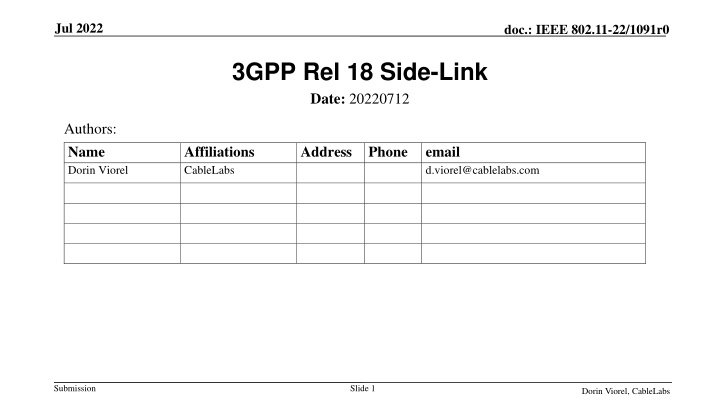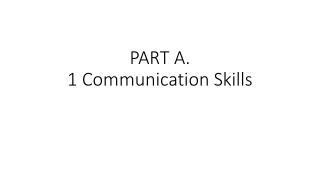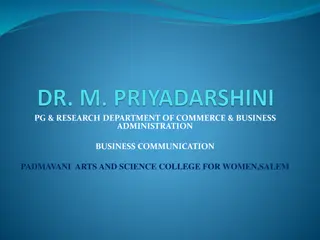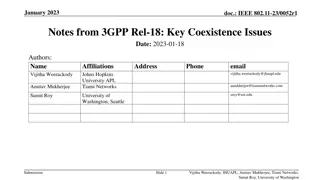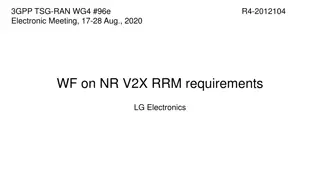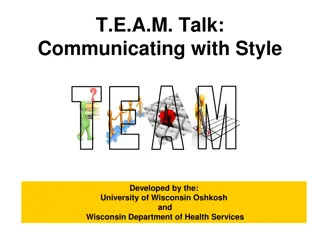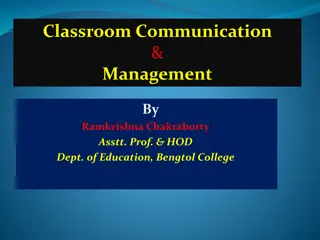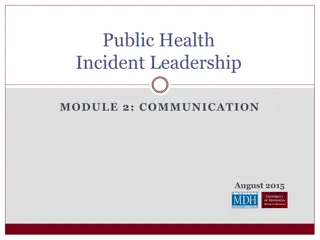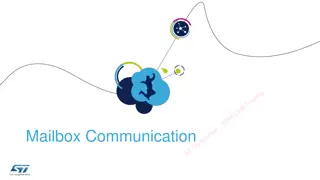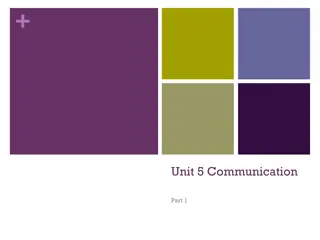Evolution of NR Sidelink Communication
Timeline transitioned from LTE D2D to NR eV2X, introducing non-safety modes for V2X communications. Study on support of sidelink on unlicensed spectrum, addressing challenges in regulatory coexistence for UE-to-UE communication. Evaluation methodology discussions impacting NR-U specifications and coexistence assumptions.
Download Presentation

Please find below an Image/Link to download the presentation.
The content on the website is provided AS IS for your information and personal use only. It may not be sold, licensed, or shared on other websites without obtaining consent from the author.If you encounter any issues during the download, it is possible that the publisher has removed the file from their server.
You are allowed to download the files provided on this website for personal or commercial use, subject to the condition that they are used lawfully. All files are the property of their respective owners.
The content on the website is provided AS IS for your information and personal use only. It may not be sold, licensed, or shared on other websites without obtaining consent from the author.
E N D
Presentation Transcript
Jul 2022 doc.: IEEE 802.11-22/1091r0 3GPP Rel 18 Side-Link Date: 20220712 Authors: Name Dorin Viorel Affiliations CableLabs Address Phone email d.viorel@cablelabs.com Submission Slide 1 Dorin Viorel, CableLabs
Jul 2022 doc.: IEEE 802.11-22/1091r0 Side-Link Timeline* Based on the former LTE D2D concept: the communication between Ues without accesing the core network. Recognized as SideLink starting with Rel 15 (e.g. vehicles as UEs). Rel 16 introduces the NR eV2X (vehicle to everything) complementing LTE V2X.. It evolved into non-safety 2 Submission Dorin Viorel, CableLabs
Jul 2022 doc.: IEEE 802.11-22/1091r0 Sidelink Modes of Operation* Partial-coverage In-coverage Out-of-coverage Mode1: in-coverage devices Mode2: out-of-coverage devices (device-to-device communication) Mode3 and 4: defined for V2X communications Rel 18 SL Evolution SID/WID** Study and specify support of sidelink on unlicensed spectrum for both mode 1 and mode 2 where Uu operation for mode 1 is limited to licensed spectrum only [RAN1, RAN2, RAN4] Comments: PC5 communication is allowed in 5/6 GHz in n96 regions, other than US and Canada. Device to device communication has not been discussed as part of NR-U Specs (TS37.213). * https://blog.3g4g.co.uk/2017/10/3gpp-sidelink-and-its-proposed.html ** RP-220300 3 Submission Dorin Viorel, CableLabs
Jul 2022 doc.: IEEE 802.11-22/1091r0 NR Sidelink Allocation Comments: SL has a different PHY allocation than LTE/NR The NR SL resources are grouped into Resources Pools Contiguous/non-contiguous slot allocation A contiguous number of Physical Resource Blocks (PRB) forms a sub-channels Mode1 and 2 have different allocations Mode1: slot/subchannel allocation is configured by the network Mode2: slot/subchannel allocation is pre-configured Mode 2 (UE to UE) communications has not been analyzed neither by LAA-LTE nor by NR-U. 4 Submission Dorin Viorel, CableLabs
Jul 2022 doc.: IEEE 802.11-22/1091r0 RAN Rel 18. SL-U Coexistence Challenges Regulatory UE to UE communication not allowed by FCC (USA) and ISED (Canada) for 6GHz UNII 5-8 SL-U can t be implemented in US/Canada (see Appendix). Fixed RAN Plenary #96 (June 96) clarified* the ambiguity surrounding Mode 1 in unlicensed spectrum %In sidelink unlicensed operation, the gNB does not perform Type 1 channel access to initiate and share a channel occupancy, neither Type 2 channel access to share an initiated channel occupancy, nor semi-static channel access procedures to access an unlicensed channel. Evaluation Methodology (under discussion) may not follow NR-U guideline (TR38.888). New/updated coexistence assumptions would require to re-visit NR-U specifications. UE to UE COT sharing is under discussion. Impact upon vehicle hot-spot operation. UE to multiple UE COT sharing Additional coexistence impact beside the existent NR-U/LAA LTE one, due to the potential SL-U pool size. Increased demand (under discussion) for LBT1 and LBT2 beside NR-U allowances. SL-U Resource Pool is a critical resource and hence subject to an increased priority class COT: Channel Occupancy Time LBT: Listen Before Talk SL-U: SideLink in Unlicensed spectra * RP-221582 5 Submission Dorin Viorel, CableLabs
Jul 2022 doc.: IEEE 802.11-22/1091r0 Appendix 6 Submission Dorin Viorel, CableLabs
Jul 2022 doc.: IEEE 802.11-22/1091r0 FCC restrictions on SL-U Title 47/Chapter 1/Subchapter A/Part 15/Subpart E/#15.407d (5) In the 5.925-7.125 GHz band, client devices, except fixed client devices, must operate under the control of a standard power access point, indoor access point or subordinate devices; Subordinate devices must operate under the control of an indoor access point. In all cases, an exception exists for transmitting brief messages to an access point when attempting to join its network after detecting a signal that confirms that an access point is operating on a particular channel. Access points and subordinate devices may connect to other access points or subordinate devices. Client devices are prohibited from connecting directly to another client device. Title 47/Chapter 1/Subchapter A/Part 15/Subpart E/#15.407a (v) In the 5.850-5.895 GHz band, client devices must operate under the control of an indoor access point. In all cases, an exception exists for transmitting brief messages to an access point when attempting to join its network after detecting a signal that confirms that an access point is operating on a particular channel. Access points may connect to other access points. Client devices are prohibited from connecting directly to another client device. Title 47/Chapter 1/Subchapter A/Part 15/Subpart E/#15.407h (2) Radar Detection Function of Dynamic Frequency Selection (DFS). U-NII devices operating with any part of its 26 dB emission bandwidth in the 5.25-5.35 GHz and 5.47-5.725 GHz bands shall employ a DFS radar detection mechanism to detect the presence of radar systems and to avoid co-channel operation with radar systems. Operators shall only use equipment with a DFS mechanism that is turned on when operating in these bands. The device must sense for radar signals at 100 percent of its emission bandwidth. The minimum DFS detection threshold for devices with a maximum e.i.r.p. of 200 mW to 1 W is 64 dBm. For devices that operate with less than 200 mW e.i.r.p. and a power spectral density of less than 10 dBm in a 1 MHz band, the minimum detection threshold is 62 dBm. The detection threshold is the received power averaged over 1 microsecond referenced to a 0 dBi antenna. For the initial channel setting, the manufacturers shall be permitted to provide for either random channel selection or manual channel selection. Title 47/Chapter 1/Subchapter A/Part 15/Subpart E/#15.407k (3) An AFC system must obtain information on protected services within the 5.925-6.425 GHz and 6.525-6.875 GHz bands from Commission databases and use that information to determine frequency availability for standard power access points and fixed client devices based on protection criteria specified in paragraph (l)(2) of this section. 7 Submission Dorin Viorel, CableLabs
